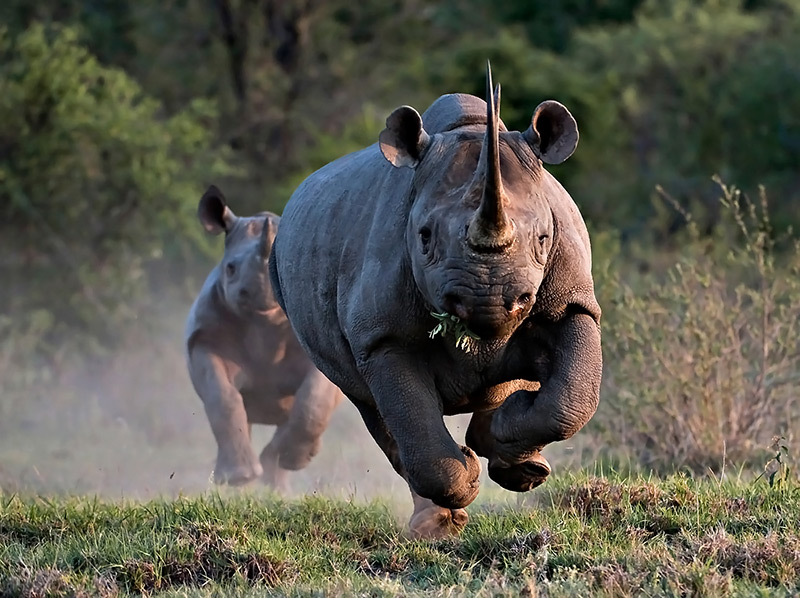
The horn is used for ornamental dagger handles and worth over $20,000 in the black market. The main cause of decline is poaching and the demand for its horn. In the 1960s an estimated 70,000 black rhinos were found in Africa and in 1981 the numbers had dropped to around 15,000, and only twelve years later, slightly more than 2000 of the population remained. There are four subspecies of black rhinoceros: The South-central black rhinoceros ( Diceros bicornis minor), the South-western black rhinoceros ( Diceros bicornis bicornis), the East African black rhinoceros ( Diceros bicornis michaeli), and the West African Black Rhinoceros ( Diceros bicornis longipes). The calf remains with the mother for up to three years. The female gives birth to only one calf after a gestation period of 15 to 18 months. Males wonder alone until it is time to breed or when wallowing in waterholes with other rhinos. Breeding occurs year-round, but most births occur during the rainy season. The black rhinoceros eats mostly leaves, young shoots and twigs. This species is known to be aggressive especially when detecting danger.

Two horns appear on the black rhino's head, the front one being longer and measuring up to 53 inches in length. Their sinus passages are said to be larger than their brains. Rhinos have poor vision but a good sense of smell. The black rhino can weigh from 2000 to 4000 lb, though it can move very quickly (up to 35 mph) when ready to charge, and can reach a body length of 9 to 12 feet. The mud helps keep insects off and keeps the rhinos cool in the hot African climate.

Black rhinoceros skin#
Its skin may sometimes appear black after its daily mud bath in black or brown marshy areas. The skin of the black rhinoceros is gray and not black as its common name may suggest. The black rhinoceros is one of the two species of rhinoceros found in Africa.


 0 kommentar(er)
0 kommentar(er)
